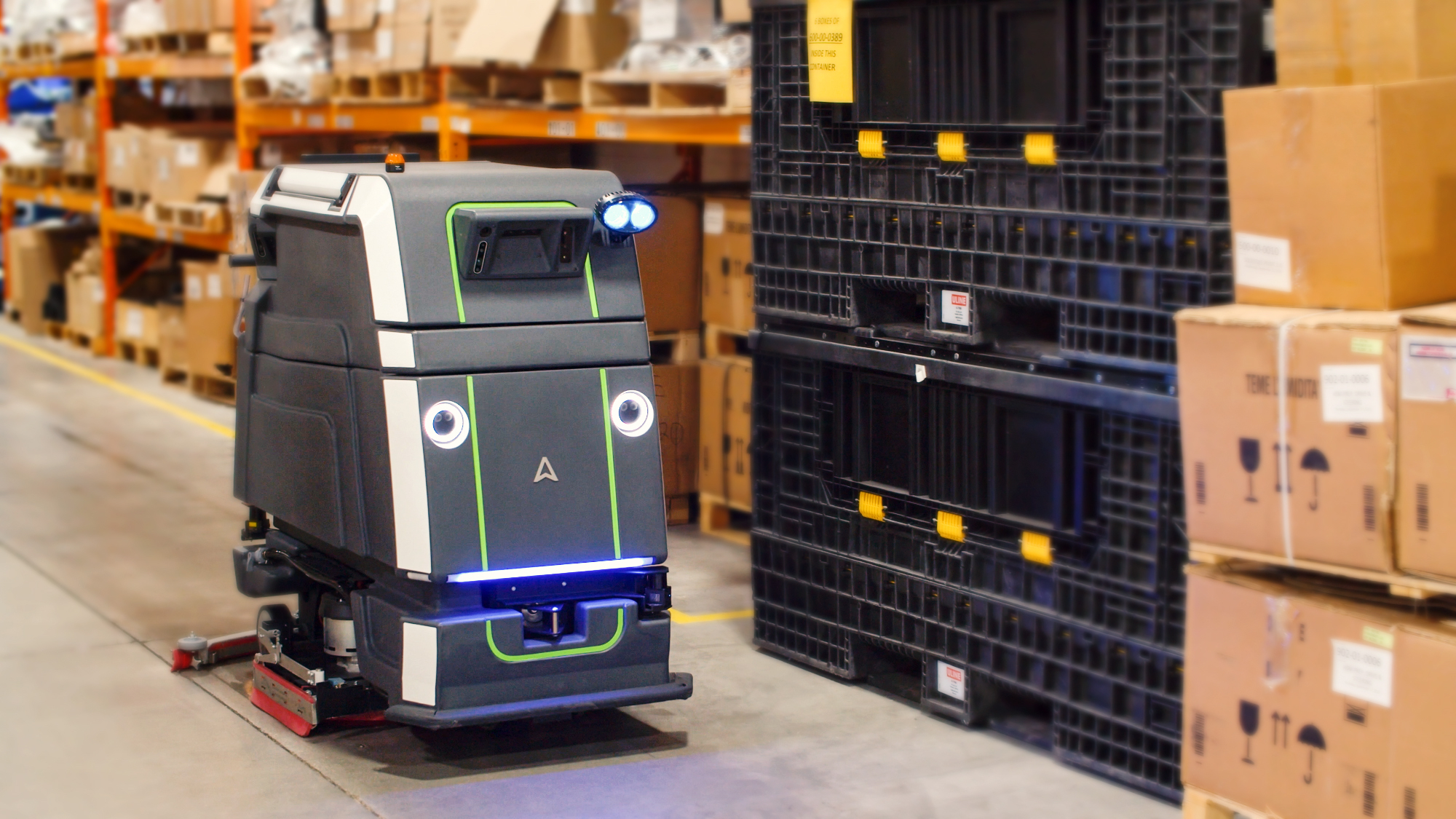
Avidbots employs MapleSim to design cleaning robots in a virtual simulation environment. Image Courtesy of Avidbots
Latest News
August 15, 2022
Designing an autonomous commercial cleaning robots is no easy task and doing so in a timely fashion to capitalize on the growing demand for high-end cleaning systems makes the development timeline all the more pressing.
To accelerate its time-to-market, robotics maker Avidbots has teamed up with Maplesoft to leverage the MapleSim advanced modeling software to design and test robots in a virtual simulation environment and cut back on physical testing. By leveraging Maplesoft MapleSim, Avidbots engineers were able to create a realistic digital twin model of its robot designers, providing flexibility to test out a variety of scenarios, features, and components and saving time and money on physical prototyping, according to Skylar Lawrence-LeBel, director of marketing for Avidbots.
Leveraging the simulation software enabled the team to move quickly and created higher confidence in the concepts it choose to develop, Lawrence-LeBel says. “Making virtual twins and automation means that much of the initial testing that would have been performed on the physical prototypes can be done via software which has made the development process much more efficient,” he says.
Avidbots launched its Neo2 fully autonomous robot floor cleaner, Neo 2, in 2020, following up with the launch of its Disinfection Add-On in 2021 to meet a need that opened up as a result of the pandemic. Warehouses and retail businesses were on the hunt for efficient, cost-effective cleaning options especially in light of unpredictable staffing and the on-going requirement for additional COVID-related surface disinfection steps.
With MapleSim, Avidbots mechatronics engineers now rapidly produce different virtual prototypes of the commercial cleaning robots faster than building a single physical system. They can also easily test the performance of a digital model under a variety of operating conditions as opposed to setting up multiple testing spaces in warehouses to test physical concept robots.
Given that MapleSim is built on top of Maple, Avidbots engineers were able to bring in other Maple apps and build custom analysis tools for the program, Lawrence-LeBel says. “This allows us to build onto the digital twin of our robots to gather data that would otherwise be very difficult to get in the traditional way,” he explains. One potential challenge with simulation-based development is properly validating the models. “Yet we found that MapleSim provides some great tools to make that process easy and reliable,” he says.
Powered by Avidbots Autonomy, a proprietary AI software, the Neo product line delivers a fully autonomous clean while autonomously navigating through designated cleaning areas and automatically detecting and avoiding obstacles. With its advanced performance reporting, Neo also allows companies to make data-driven decisions, creating operational efficiencies and protecting against health and safety concerns.
Watch this video to learn more about Avidbots and the Neo 2.
More Maplesoft Coverage
Subscribe to our FREE magazine, FREE email newsletters or both!
Latest News
About the Author
Beth Stackpole is a contributing editor to Digital Engineering. Send e-mail about this article to [email protected].
Follow DE





